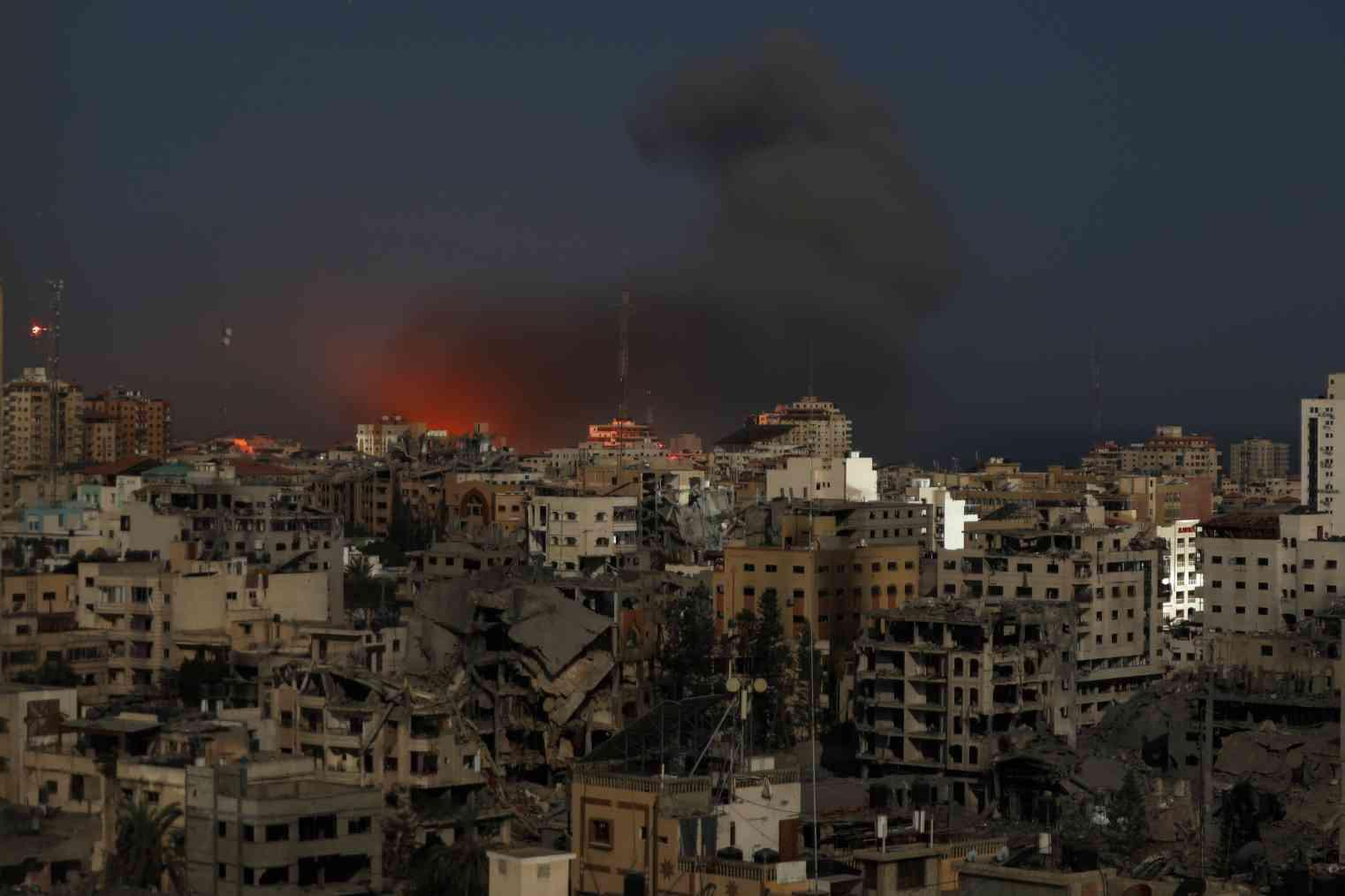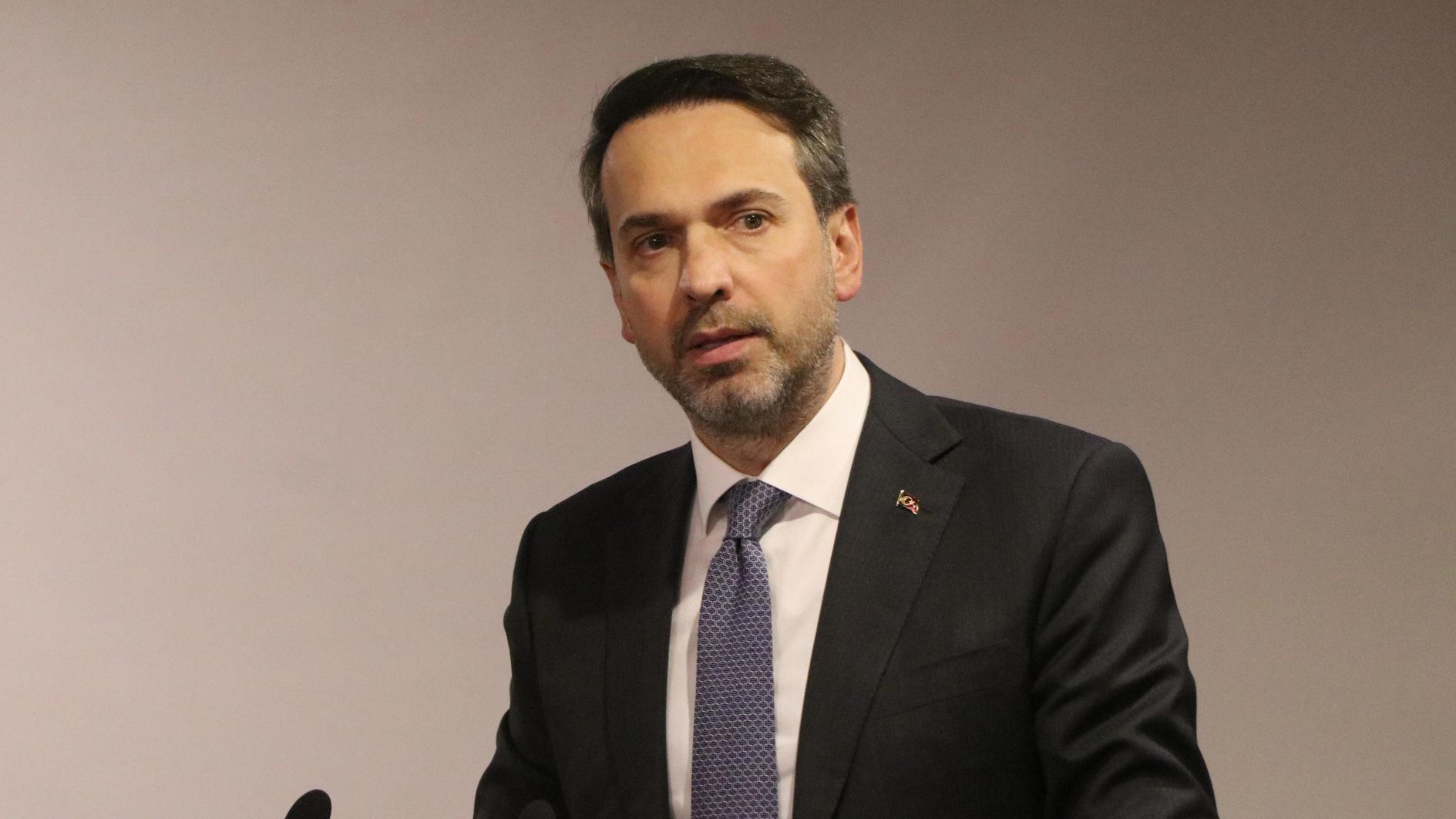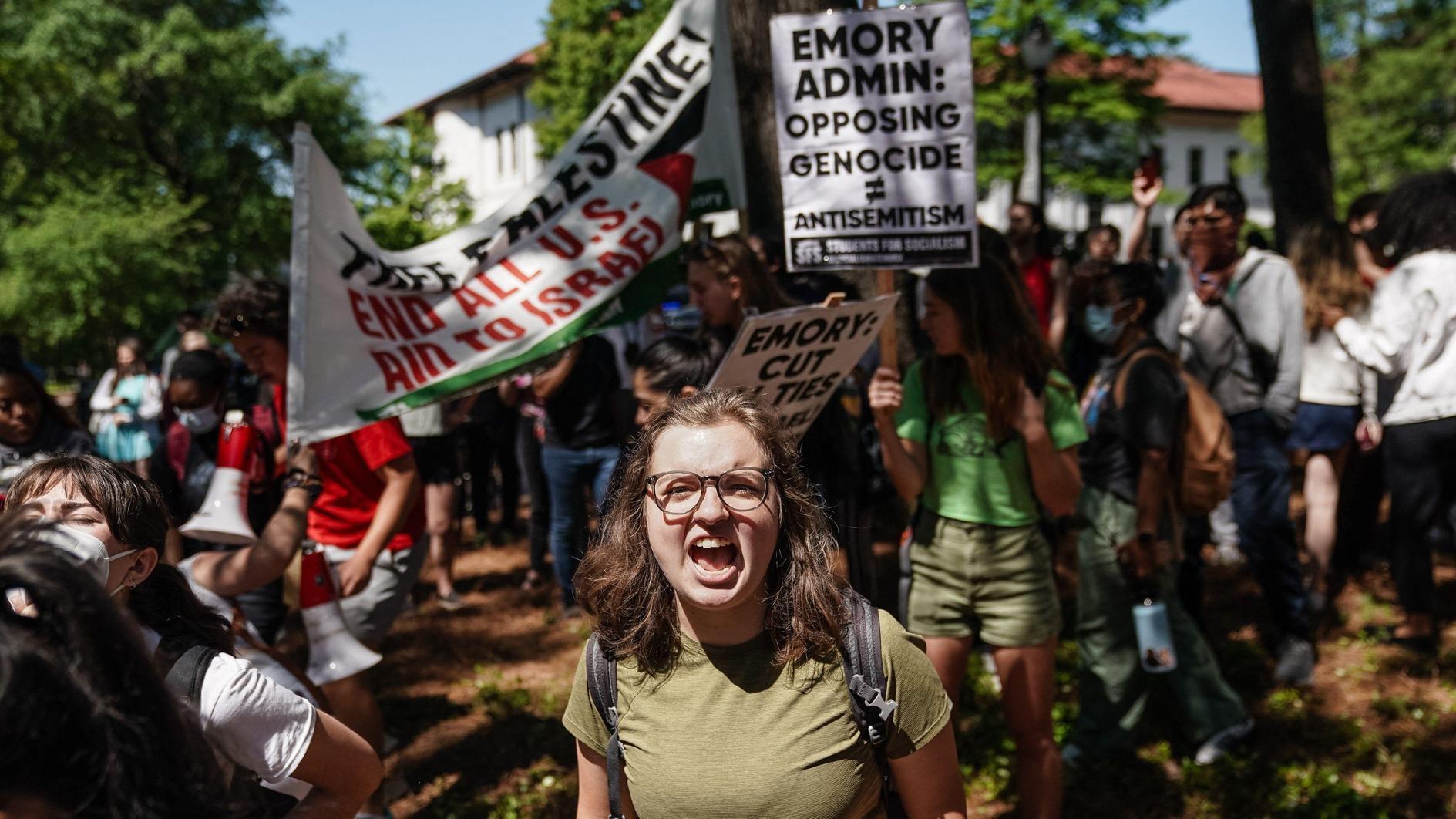Israeli forces battle Hamas around Gaza City
GAZA

Israeli troops battled Hamas militants and attacked underground compounds on Tuesday with a focus on northern Gaza. An estimated 800,000 Palestinians have fled south, even though Israeli airstrikes have pounded the entirety of the besieged enclave.
Buoyed by the first successful rescue of a captive held by Hamas, Prime Minister Benjamin Netanyahu has rejected calls for a cease-fire and again vowed to crush Hamas' ability to govern Gaza or threaten Israel following its bloody Oct. 7 rampage, which ignited the war.
More than half the territory's 2.3 million Palestinians have fled their homes, with hundreds of thousands sheltering in packed U.N.-run schools-turned-shelters or in hospitals alongside thousands of wounded patients. Israeli strikes have hit closer to several northern hospitals in recent days, alarming medics.
The U.N. agency for Palestinian refugees, known as UNRWA, says nearly 672,000 Palestinians are sheltering in its schools and other facilities — four times their capacity. Thousands of people broke into its aid warehouses over the weekend to take food, as supplies of basic goods have dwindled because of the Israeli siege.
There has been no central electricity in Gaza for weeks, and Israel has barred the entry of fuel needed to power emergency generators for hospitals and homes.
UNRWA, which hundreds of thousands of people in Gaza rely on for basic services even in normal times, says 64 of its staff have been killed since the start of the war, including a man killed alongside his wife and eight children in a strike late Monday.
“This is the highest number ever of U.N. aid workers killed in any conflict around the world in such a short time,” spokesperson Juliette Touma told The Associated Press. “UNRWA will never be the same without these colleagues.”
The war has also threatened to ignite even heavier fighting on other fronts. Israel and Lebanon's Hezbollah militant group have traded fire on a daily basis along the border, and Israel and the U.S. have struck targets in Syria linked to Iran, which supports Hamas, Hezbollah and other armed groups in the region.
The military said it shot down what appeared to be a drone near the southernmost city of Eilat and intercepted a missile over the Red Sea on Tuesday, neither of which entered Israeli airspace.
The Iran-backed Houthi rebels in Yemen later issued a video statement claiming to have fired ballistic missiles and drones at Israel, saying it was the third such operation. They threatened to carry out more strikes “until the Israeli aggression stops.”
Earlier this month, a U.S. Navy destroyer in the Red Sea intercepted three cruise missiles and several drones launched toward Israel by the Houthis, who control much of northern Yemen, including its capital, Sanaa. Mysterious projectiles have also struck inside Egypt, near the Israeli border.
In the occupied West Bank, where Israeli-Palestinian violence has also surged, the army demolished the family home of Saleh al-Arouri, a senior Hamas official exiled over a decade ago. Ali Kaseeb, head of the local council in the village of Aroura, said the home had been vacant for 15 years.
Jonathan Conricus, an Israeli military spokesman, said ground operations in Gaza are focused on the north, including Gaza City, which he said was the “center of gravity of Hamas."
“But we also continue to strike in other parts of Gaza. We are hunting their commanders, we are attacking their infrastructure, and whenever there is an important target that is related to Hamas, we strike it," he said.
The military said it struck some 300 militant targets over the past day, including compounds inside tunnels, and that troops had engaged in several battles with Palestinian militants armed with antitank missiles and machine guns. Video footage released by the military showed soldiers and a tank moving down a dirt road between two rows of demolished buildings, some of them three to four stories high.
Hamas released its own video showing what it said was a battle in northern Gaza on Sunday. A fighter wearing a GoPro-style camera emerged from a tunnel with a rocket-propelled grenade launcher and ran across sand dunes and shrubs with other militants amid the clatter of gunfire.
It was not possible to independently confirm the reports.
Larger ground operations have been launched both north and east of Gaza City, which before the war was home to over 650,000 people.
Conricus said some 800,000 people have heeded the Israeli military's orders to flee from the northern part of the strip to the south. But tens of thousands of people remain in and around Gaza City, and casualties are expected to mount on both sides as the battle moves into dense, residential neighborhoods.
The window to flee south may be closing, as Israeli forces reached Gaza's main north-south highway this week. Video circulating Monday showed a tank opening fire on a car that had approached a sand berm but was turning around. Gaza's Health Ministry said three people were killed.
Zaki Abdel-Hay, a Palestinian man living a few minutes' walk from the road south of Gaza City, said people are afraid to use it. “People are very scared. The Israeli tanks are still close,” he said over the phone, adding that “constant artillery fire” could be heard near the road.
Dawood Shehab, a spokesperson for Islamic Jihad, a smaller militant group allied with Hamas, told Al Jazeera television that its fighters were battling Israeli forces who were trying to cut off the main highway and a parallel coastal road farther west.
In a news conference late Monday, Netanyahu rejected calls for a cease-fire to facilitate the release of captives or end the war, which he has said will be long and difficult. “Calls for a cease-fire are calls for Israel to surrender to Hamas,” he told a news conference. "That will not happen.”
More than 8,500 Palestinians have been killed in the war, mostly women and minors, the Gaza Health Ministry said Monday. The figure is without precedent in decades of Israeli-Palestinian violence.
Over 1,400 people have died on the Israeli side, mainly civilians killed during Hamas' initial attack, also an unprecedented figure. Palestinian militants have continued firing rockets into Israel.
The military said Monday that special forces rescued one of the estimated 240 captives seized by Palestinian militants during the wide-ranging assault. It said Pvt. Ori Megidish, 19, was “doing well” and had been reunited with her family.
Hamas has released four hostages, and has said it would let the others go in return for thousands of Palestinian prisoners held by Israel, which has dismissed the offer. Hamas released a short video Monday showing three other female captives.
Gaza’s humanitarian crisis, meanwhile, continues to worsen.
The World Health Organization said two hospitals have been damaged and an ambulance destroyed in Gaza over the last two days. It said all 13 hospitals operating in the north have received Israeli evacuation orders in recent days. Medics have refused such orders, saying it would be a death sentence for patients on life support.
Israel says it targets Hamas fighters and infrastructure and that the militants operate among civilians, putting them in danger.
Israel has allowed more than 150 trucks loaded with food and medicine to enter Gaza from Egypt over the past several days, but aid workers say it's not enough to meet rapidly growing needs.
Israel also said it has reopened two main water lines in Gaza, but the U.N. office for humanitarian affairs said one of them had stopped working after operating for two weeks and that the other one was in need of repairs.
















